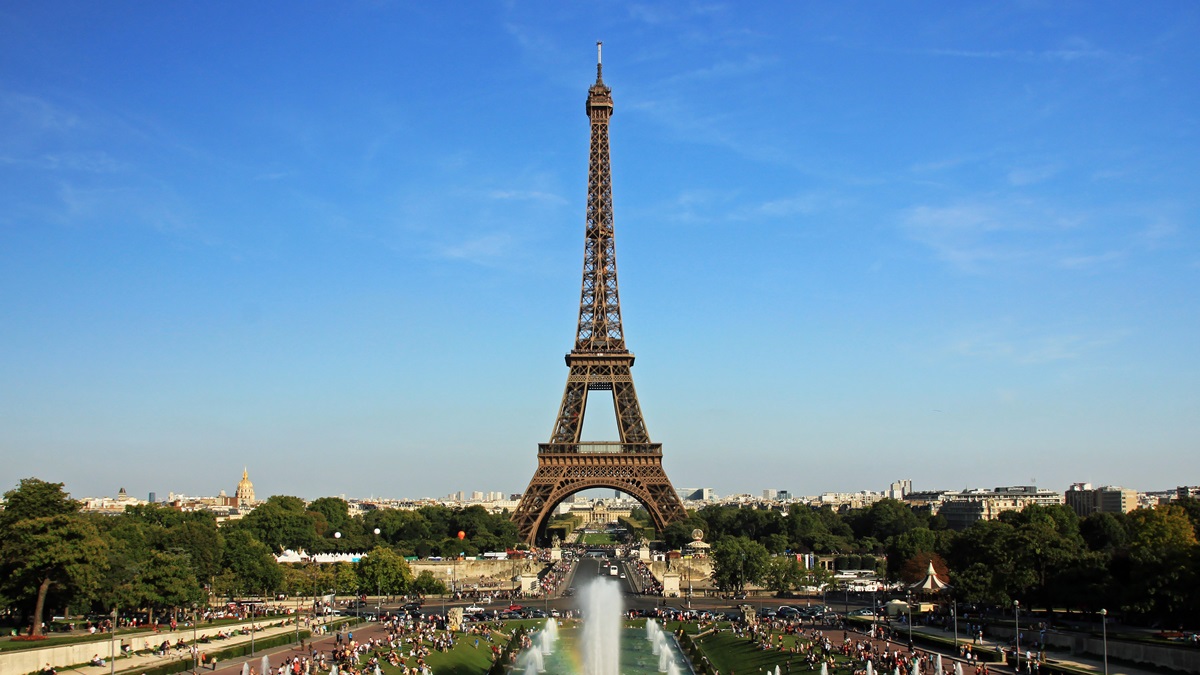Every year, millions of people from all over the world visit the Eiffel Tower. The famous landmark, located in Paris’ Champ de Mars, stands 1,083 feet tall and has restaurants, a museum, and a reception room. Visitors can also get an unobstructed view of Paris from the tower’s observation deck.
The Eiffel Tower was built as the main attraction of the Paris World’s Fair of 1889 (Exposition Universelle). In addition, it was intended to be a commemorative monument marking the 100th anniversary of the French Revolution. It was the chosen project among more than 100 submissions. Construction began in 1887, and it was completed just a little over two years later in 1889. Two engineers, Emile Nouguier and Maurice Koechlin, came up with the design, and it was named after engineer Gustave Eiffel, the man who owned the company the two designers worked for.
There are many interesting facts about the Eiffel Tower, but perhaps the most fascinating one is that the monument was once sold by a con artist.
The con artist known as Victor Lustig
Victor Lustig was born in 1890 in Austria-Hungary, and his intelligence was evident at an early age. He learned to speak several languages and used his brilliance to deceive unsuspecting victims. Lustig worked his way up from being a street hustler to a professional con artist. He boarded cruise ships, mingled with the wealthy, and played cards with them. They would later be victims of his con.
Throughout the years, Lustig went by over 40 aliases and was arrested in the United States more than 50 times. He was interrogated by authorities in at least five countries and was able to accomplish the biggest scams. Today, he is most known as the man who sold the Eiffel Tower.
The Eiffel Tower scam
In 1925, Lustig was in Paris to work on, arguably, his biggest con. The Eiffel Tower wasn’t supposed to be a permanent fixture. Originally, the plan was to dismantle it after two decades. By 1925, however, it had been 36 years since the monument was built, and believe it or not, many locals viewed it as an atrocity and wanted it demolished. Lustig took advantage of the public outcry and hatched a plan.
The con artist commissioned stationery that looked official — it had a letterhead and the French government’s official seal. He then used those to write letters to the heads of a few of the biggest scrap metal companies in the country and invited them for a secret meeting at Hotel De Crillon, a fancy hotel where he was checked in. When the businessmen arrived, he introduced himself as the deputy director general of the Ministère de Postes et Télégraphes and reiterated that this meeting must be kept under wraps so as not to face backlash from the public.
Lustig told them that the government wanted to tear down the Eiffel Tower, and responsibility, as well as millions of rivets and thousands of iron beams, would go to the highest bidder. He then took the men up to the tower using a fake access card to survey the structure. Afterward, he asked each businessman to submit their bids to him by the following day.
One of the men, Andre Poisson, seemed the most interested in the group. He requested a meeting with Lustig to see what he could do to ensure he won the bidding war. Poisson said that he wanted the contract but didn’t have the same connections as the other businessmen as he wasn’t as established as they were in Paris. Lustig empathized with Poisson’s situation, but he also implied that he was experiencing some financial hardships because government officials were not paid much. Poisson took the bait. He reportedly bid a total of $70,000 (equivalent to $1.25 million today) — $20,000 for his official bid and a $50,000 bribe in cash to ensure that he won the contract.
It was a done deal. The transaction was completed and Lustig had the money. By the time Poisson figured out he had been scammed, Lustig had already left the country.
He attempted another sale of the Eiffel Tower
As Lustig enjoyed his newly acquired wealth, he constantly checked Parisian newspapers to see whether Poisson had reported him to the authorities, but there was no news about it. It turned out that Poisson was too embarrassed to have been a victim of a scam that he kept it to himself.
A while later, Lustig went back to Paris in an attempt to sell the Eiffel Tower once again. He invited a different group of businessmen and went through the same modus operandi. That time, however, one of the men he met with had an inkling that something wasn’t right and alerted authorities. The scam was reported in newspapers and Lustig fled to Chicago before authorities could catch him.
Lustig continued his life as a con artist afterward, scamming people with a bizarre device called the “Rumanian Box” he claimed could duplicate any paper currency fit into it. They bought it at a high price, only discovering it didn’t work after he’d fled. He later conned Al Capone(!), escaped from New York’s Federal House of Detention, and ended up on Alcatraz.
He died in March 1947 at the age of 57 from pneumonia.
